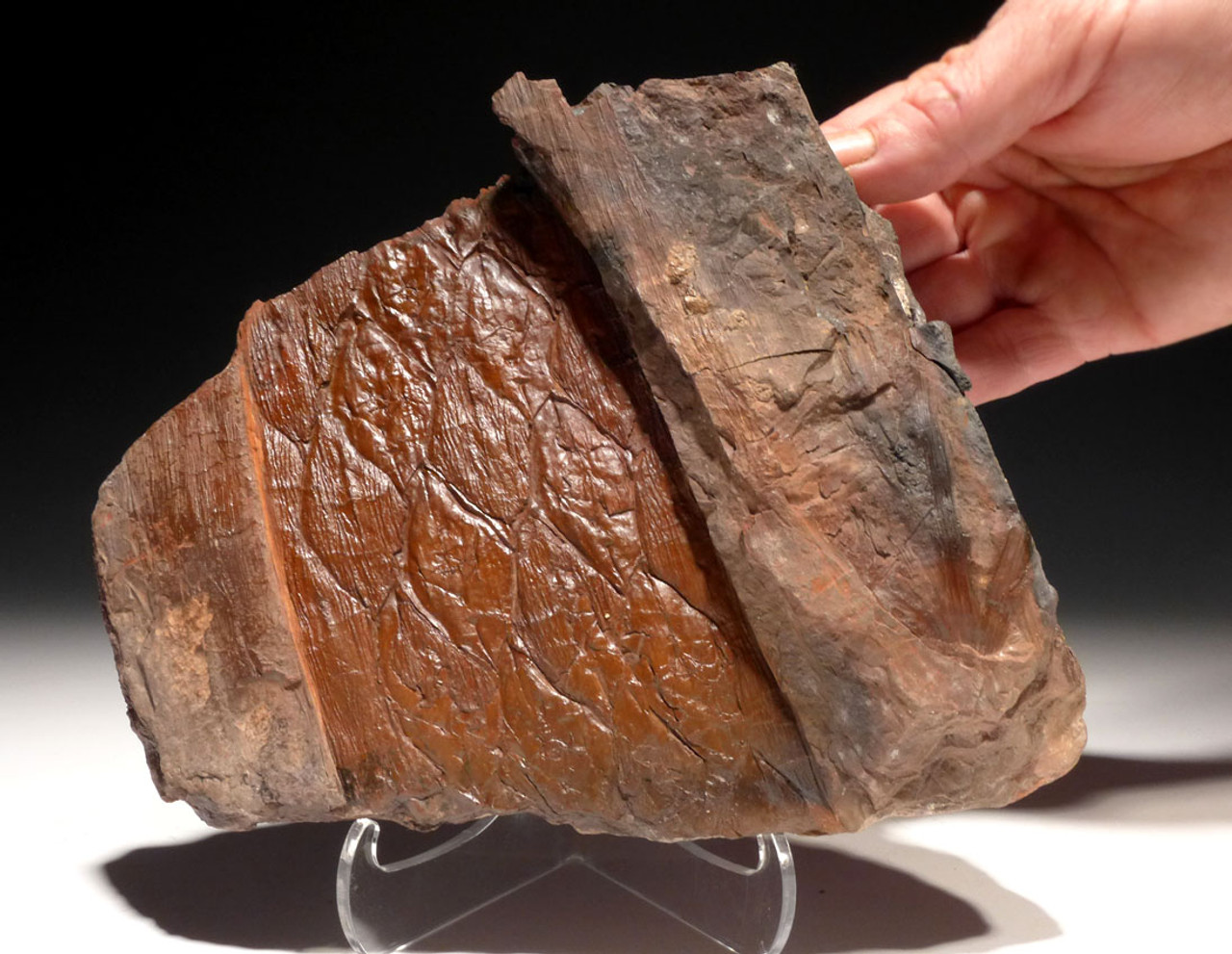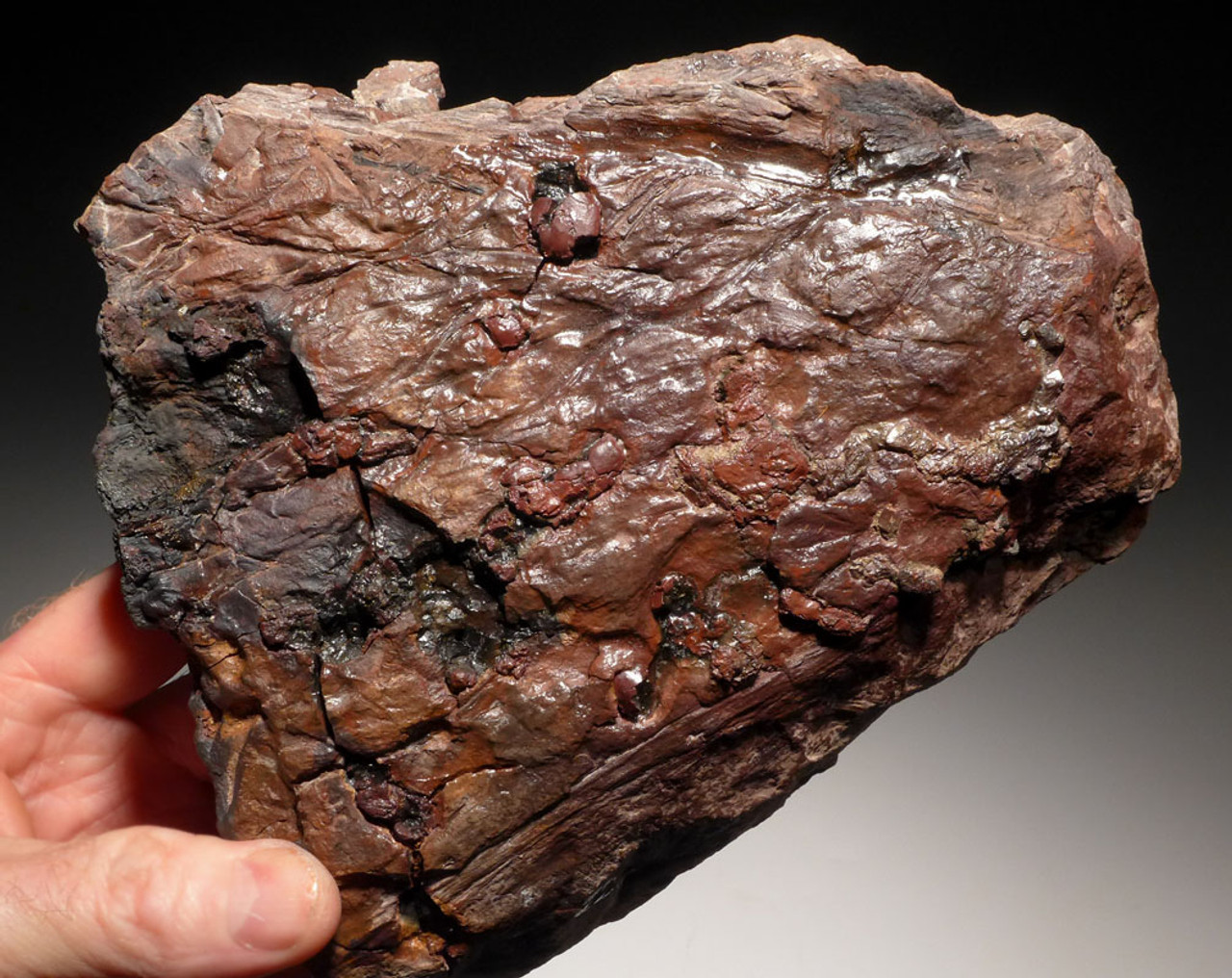Product Description
ID
|
Lepidodendron sp.
|
||
FOUND
|
Upper Silesia Basin - Southwest Poland
|
||
AGE
|
UPPER CARBONIFEROUS: 325 million years
|
||
SIZE
|
7" x 6.25" overall
|
||
CONDITION
|
NO REPAIR OR RESTORATION, SEALER
|
||
NOTE
|
STUNNING COLOR AND DETAIL WITH
|
||
INCLUDES STAND - Actual Item - One Only
|
|||
CLICK HERE TO LEARN MORE ABOUT PLANT FOSSILS
With most plant fossils of this deposit being small, fragmentary pieces, this is a sizeable, intact example and ideal for display. It is a highly detailed Lepidodendron sp. fossil plant with other associated fossils in attached layers. The color is natural and a wonderful, intense brick red hue. The exquisite preservation dates from the Carboniferous Period of the Upper Silesia Basin of southwest Poland. The geometry and pattern of the Lepidodendron is beautiful and offers a glimpse into the past plant life of the planet when amphibians and sharks were amongst the apex predators and rulers of the Earth. The flora of this period must have been not only stunningly beautiful, but very alien in appearance compare to what we are used to today. 100% AUTHENTIC AND ORIGINAL AS FOUND WITH NO REPAIR. BACK SIDE STABILIZED.
A spectacular quality fossil showing beautiful, lifelike detail of extinct flora of a European swamp forest from over 300 million years ago!
During the Carboniferous Period, a large portion of Europe and North America was on the equator. The warm and consistently humid climate was ideal for the growth of extensive swampy forests. The Paralic Basin was the largest Carboniferous basin which comprised regions of what are now Ireland, England, northern France, Belgium, The Netherlands, Germany (Ruhr District) and Poland. Periodic changes in the sea levels caused the rivers that traversed these forests to flood, depositing massive amounts of sand and mud thereby burying the forest along the banks. In a period of one million years, several thousand meters of sediment would be deposited, densely packing and pressing the abundant vegetation into flattened rock fossil impressions. The most common vegetation in these forests were Sigillaria and Lepidodendron.
Lepidodendron and Sigillaria are lycopods, or more commonly known as club mosses. They belong to the lycophytes group, today only represented by a handful of small herbaceous forms. While they were giant tree-sized plants, Lepidodendron and Sigillaria are not actually classified as trees but are very unique types of plants that died out hundreds of millions of years ago. Both grew to amazing heights exceeding 100 feet with stems over 6 feet in diameter! Their branches were draped with long, grass-like foliage of spirally arranged leaves and cones containing spores. Lepidodendron is famous for its unmistakable scale-like bark. The plant was anchored at the base, not by a deep root system, but by several shallow running Y-shaped branches called stigmaria. The upper branches at the top of the plant terminated in cigar-shaped cones called Lepidostrobus. Depending on the specific species of Lepidodendron, these cones contained either small or large spores, or both. The presence of Lepidodendron fossils suggest a very hot and humid environment existed where they once thrived.
 US DOLLAR
US DOLLAR
 EURO
EURO
 AUSTRALIAN DOLLAR
AUSTRALIAN DOLLAR
 CANADIAN DOLLAR
CANADIAN DOLLAR
 POUND STERLING
POUND STERLING












